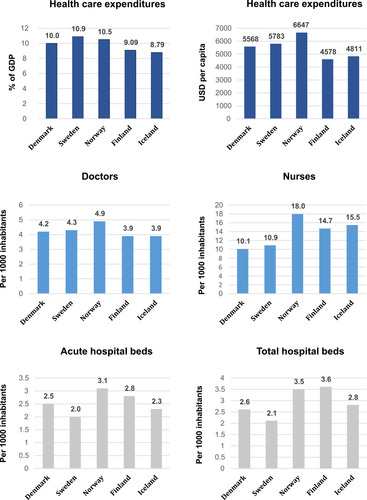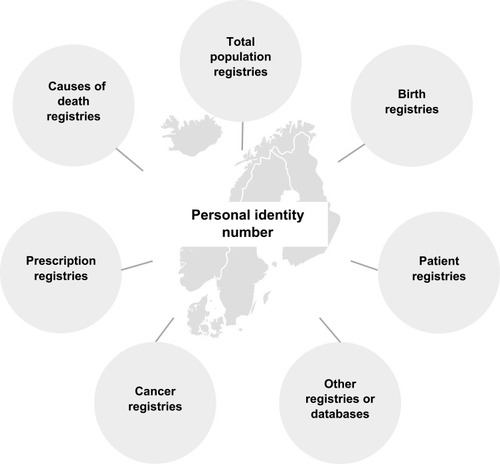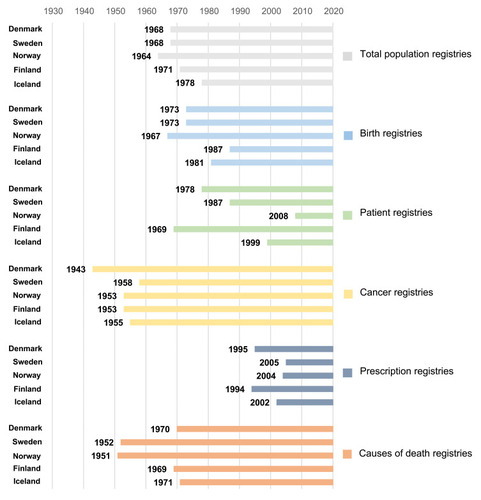Figures & data
Figure 1 Population statistics for the five Nordic countries, 2018.

Figure 2 Key spending in the Nordic health care systems, 2018/2019 or latest available.

Figure 3 Overview of the operational organization of the Nordic health care systems.

Figure 4 Combining Nordic registries by personal identity number.

Figure 5 The time coverage of selected Nordic population-based registries.

Table 1 Key Variables in the Nordic Total Population Registries
Table 2 Selected Key Variables in the Nordic Birth Registries
Table 3 Selected Key Variables in the Nordic Patient Registries
Table 4 Timeline for Use of the International Statistical Classification of Diseases and Related Health Problems (ICD) Coding Systems in the Patient Registries by Country
Table 5 Selected Key Variables in the Nordic Cancer Registries
Table 6 Selected Key Variables in the Nordic Prescription Registries
Table 7 Selected Key Variables in the Nordic Causes of Death Registries
Table 8 Country-Specific Overview of Permission Needed for Registry-Based Research and Where to Apply for Data
